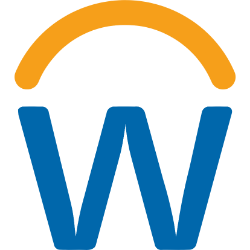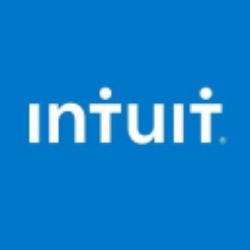TEAM

Atlassian Corporation
TEAM
(0.8)258,41 USD
-8.29% ROA
-38.28% ROE
-145.55x PER
43.689.908.088,00 USD
100.19% DER
0% Yield
-8.59% NPM
Atlassian Corporation Stock Analysis
Atlassian Corporation Fundamental Analysis
Fundamental analysis in stock investing is like studying the foundation of a house before buying it. It involves looking at a company's financial health, like its earnings, assets, and debts, to determine if it's a good investment based on its fundamental strength and potential for growth.
| # | Analysis | Rating |
|---|---|---|
| 1 |
Revenue Growth
With a track record of consistent revenue growth in the past five years, this company presents a compelling opportunity. |
|
| 2 |
Net Profit Growth
Throughout the last three years, this company has experienced consistent net profit growth, reflecting a robust financial performance and making it an attractive investment prospect. |
|
| 3 |
ROE
Negative ROE (-78.01%) indicates poor financial performance, raising concerns about profitability and efficiency in utilizing shareholders' equity. |
|
| 4 |
ROA
The stock's ROA (-15.34%) suggests that it's struggling to generate profits from its assets, making it a risky choice for investment. |
|
| 5 |
PBV
The stock's high Price-to-Book Value (P/BV) ratio (61.59x) suggests it's overvalued, potentially making it an expensive investment. |
|
| 6 |
DER
The stock is burdened with a heavy load of debt (164%), making it financially unstable and potentially risky for investors. |
|
| 7 |
Assets Growth
Company's revenue has stayed stagnant, showing no signs of improvement and making it a less favorable choice. |
|
| 8 |
Graham Number
The Graham number calculation reveals that this company's stock price is potentially inflated, implying that it may not be a desirable investment option. |
|
| 9 |
Dividend Growth
The company's dividend growth has remained unchanged for three years, signaling a lack of positive momentum and making it a less favorable investment choice. |
|
| 10 |
Dividend
The company has not distributed any dividends in the past three years, which may raise concerns for investors looking for regular income from their investments. |
|
| 11 |
Buffet Intrinsic Value
Based on Warren Buffett's formula, the company's stock seems overpriced (-1.309), indicating a potential drawback for investors as its market price exceeds its estimated intrinsic value. |
Atlassian Corporation Technical Analysis
Technical analysis in stock investing is like reading the patterns on a weather map to predict future weather conditions. It involves studying past stock price movements and trading volumes to make predictions about where a stock's price might go next, without necessarily looking at the company's financial health.
| # | Analysis | Recommendation |
|---|---|---|
| 1 | Awesome Oscillator | Buy |
| 2 | MACD | Buy |
| 3 | RSI | Hold |
| 4 | Stoch RSI | Sell |
Atlassian Corporation Price Chart
Financial Statements
Financial statements are like report cards for companies. They show how much money a company makes (income statement), what it owns and owes (balance sheet), and where it spends its money (cash flow statement), helping stock investors understand if a company is healthy and worth investing in.
Income Statements
An income statement for a company is like a scoreboard for its profits and losses. It shows how much money the company made (revenue) and how much it spent to make that money (expenses), helping stock investors see if a company is making a profit or not.
Revenue in stock investing is the total amount of money a company earns from its sales, and it's a key factor that investors consider to assess a company's financial performance and growth potential.
| Year | Revenue | Growth |
|---|---|---|
| 2013 | 148.512.000 | |
| 2014 | 215.109.000 | 30.96% |
| 2015 | 319.521.000 | 32.68% |
| 2016 | 457.058.000 | 30.09% |
| 2017 | 619.936.000 | 26.27% |
| 2018 | 873.950.000 | 29.07% |
| 2019 | 1.210.127.000 | 27.78% |
| 2020 | 1.614.173.000 | 25.03% |
| 2021 | 2.089.132.000 | 22.73% |
| 2022 | 2.802.882.000 | 25.46% |
| 2023 | 3.534.647.000 | 20.7% |
| 2024 | 4.358.603.000 | 18.9% |
Research and Development Expenses are the costs a company incurs to create and improve its products or services, which can be important for investors to evaluate a company's innovation and potential for future growth.
| Year | Research and Development Expenses | Growth |
|---|---|---|
| 2013 | 57.301.000 | |
| 2014 | 78.640.000 | 27.14% |
| 2015 | 140.853.000 | 44.17% |
| 2016 | 208.306.000 | 32.38% |
| 2017 | 310.168.000 | 32.84% |
| 2018 | 415.776.000 | 25.4% |
| 2019 | 579.134.000 | 28.21% |
| 2020 | 763.188.000 | 24.12% |
| 2021 | 963.326.000 | 20.78% |
| 2022 | 1.397.568.000 | 31.07% |
| 2023 | 1.869.881.000 | 25.26% |
| 2024 | 2.184.111.000 | 14.39% |
General and Administrative Expenses are the costs a company incurs to run its day-to-day operations, such as office rent, salaries, and utilities, which investors consider to understand a company's overall efficiency and management effectiveness.
| Year | General and Administrative Expenses | Growth |
|---|---|---|
| 2013 | 26.266.000 | |
| 2014 | 40.814.000 | 35.64% |
| 2015 | 57.330.000 | 28.81% |
| 2016 | 85.458.000 | 32.91% |
| 2017 | 118.785.000 | 28.06% |
| 2018 | 151.242.000 | 21.46% |
| 2019 | 215.714.000 | 29.89% |
| 2020 | 268.409.000 | 19.63% |
| 2021 | 315.242.000 | 14.86% |
| 2022 | 478.373.000 | 34.1% |
| 2023 | 738.101.000 | 35.19% |
| 2024 | 610.577.000 | -20.89% |
EBITDA stands for Earnings Before Interest, Taxes, Depreciation, and Amortization. It is a measure that helps stock investors analyze a company's profitability by looking at its earnings without considering certain expenses. This helps to get a clearer picture of the company's financial performance and its ability to generate cash flow.
| Year | EBITDA | Growth |
|---|---|---|
| 2013 | 23.735.000 | |
| 2014 | 35.772.000 | 33.65% |
| 2015 | 14.836.000 | -141.12% |
| 2016 | 17.019.000 | 12.83% |
| 2017 | 1.894.000 | -798.57% |
| 2018 | 28.110.000 | 93.26% |
| 2019 | -495.067.000 | 105.68% |
| 2020 | -199.201.000 | -148.53% |
| 2021 | -419.103.000 | 52.47% |
| 2022 | -374.579.999 | -11.89% |
| 2023 | -239.971.000 | -56.09% |
| 2024 | 57.354.000 | 518.4% |
Gross profit is the money a company makes from selling its products or services after subtracting the cost of producing or providing them, and it is an important measure for investors to understand a company's profitability.
| Year | Gross Profit | Growth |
|---|---|---|
| 2013 | 115.481.000 | |
| 2014 | 177.123.000 | 34.8% |
| 2015 | 266.589.000 | 33.56% |
| 2016 | 381.275.000 | 30.08% |
| 2017 | 500.775.000 | 23.86% |
| 2018 | 701.260.000 | 28.59% |
| 2019 | 999.842.000 | 29.86% |
| 2020 | 1.345.366.000 | 25.68% |
| 2021 | 1.753.111.000 | 23.26% |
| 2022 | 2.337.175.000 | 24.99% |
| 2023 | 2.900.882.000 | 19.43% |
| 2024 | 3.555.108.000 | 18.4% |
Net income in stock investing is like the money a company actually gets to keep as profit after paying all its bills, and it's an important measure to understand how well a company is doing financially.
| Year | Net Profit | Growth |
|---|---|---|
| 2013 | 10.761.000 | |
| 2014 | 18.982.000 | 43.31% |
| 2015 | 6.775.000 | -180.18% |
| 2016 | 4.373.000 | -54.93% |
| 2017 | -42.504.000 | 110.29% |
| 2018 | -119.341.000 | 64.38% |
| 2019 | -637.621.000 | 81.28% |
| 2020 | -350.654.000 | -81.84% |
| 2021 | -696.315.000 | 49.64% |
| 2022 | -614.124.000 | -13.38% |
| 2023 | -486.761.000 | -26.17% |
| 2024 | -300.519.000 | -61.97% |
EPS, or earnings per share, is a measure that shows how much profit a company has earned for each outstanding share of its stock, and it is important for stock investors as it helps understand the profitability of a company and compare it with other companies in the market.
| Year | Earning per Share (EPS) | Growth |
|---|---|---|
| 2013 | 0 | |
| 2014 | 0 | 0% |
| 2015 | 0 | 0% |
| 2016 | 0 | 0% |
| 2017 | 0 | 0% |
| 2018 | -1 | 0% |
| 2019 | -3 | 100% |
| 2020 | -1 | -100% |
| 2021 | -3 | 50% |
| 2022 | -2 | 0% |
| 2023 | -2 | -100% |
| 2024 | -1 | 0% |
Cashflow Statements
Cashflow statements show the movement of money in and out of a company, helping stock investors understand how much money a company makes and spends. By examining cashflow statements, investors can assess if a company is generating enough cash to pay its bills, invest in growth, and provide returns to stockholders.
Free cash flow is the leftover cash that a company generates after covering its operating expenses and capital expenditures, which is important for stock investors as it shows how much money a company has available to invest in growth, pay dividends, or reduce debt.
| Year | Free Cashflow | Growth |
|---|---|---|
| 2013 | 47.064.000 | |
| 2014 | 65.021.000 | 27.62% |
| 2015 | 65.545.000 | 0.8% |
| 2016 | 95.329.000 | 31.24% |
| 2017 | 183.327.000 | 48% |
| 2018 | 281.247.000 | 34.82% |
| 2019 | 420.040.000 | 33.04% |
| 2020 | 538.501.000 | 22% |
| 2021 | 808.010.000 | 33.35% |
| 2022 | 808.895.000 | 0.11% |
| 2023 | 842.299.000 | 3.97% |
| 2024 | 408.805.058 | -106.04% |
Operating cash flow represents the cash generated or consumed by a company's day-to-day operations, excluding external investing or financing activities, and is crucial for stock investors as it shows how much cash a company is generating from its core business operations.
| Year | Operating Cashflow | Growth |
|---|---|---|
| 2013 | 54.310.000 | |
| 2014 | 75.280.000 | 27.86% |
| 2015 | 98.221.000 | 23.36% |
| 2016 | 129.542.000 | 24.18% |
| 2017 | 199.381.000 | 35.03% |
| 2018 | 311.456.000 | 35.98% |
| 2019 | 466.342.000 | 33.21% |
| 2020 | 574.210.000 | 18.79% |
| 2021 | 841.330.000 | 31.75% |
| 2022 | 883.496.000 | 4.77% |
| 2023 | 868.111.000 | -1.77% |
| 2024 | 421.786.665 | -105.82% |
Capex, short for capital expenditures, refers to the money a company spends on acquiring or upgrading tangible assets like buildings, equipment, or technology, which is important for stock investors as it indicates how much a company is investing in its infrastructure to support future growth and profitability.
| Year | Capital Expenditure | Growth |
|---|---|---|
| 2013 | 7.246.000 | |
| 2014 | 10.259.000 | 29.37% |
| 2015 | 32.676.000 | 68.6% |
| 2016 | 34.213.000 | 4.49% |
| 2017 | 16.054.000 | -113.11% |
| 2018 | 30.209.000 | 46.86% |
| 2019 | 46.302.000 | 34.76% |
| 2020 | 35.709.000 | -29.66% |
| 2021 | 33.320.000 | -7.17% |
| 2022 | 74.601.000 | 55.34% |
| 2023 | 25.812.000 | -189.02% |
| 2024 | 12.981.607 | -98.84% |
Balance Sheet
Balance sheets provide a snapshot of a company's financial health and its assets (such as cash, inventory, and property) and liabilities (like debts and obligations) at a specific point in time. For stock investors, balance sheets help assess the company's overall worth and evaluate its ability to meet financial obligations and support future growth.
Equity refers to the ownership interest or stake that shareholders have in a company, representing their claim on its assets and earnings after all debts and liabilities are paid.
| Year | Equity | Growth |
|---|---|---|
| 2013 | 66.178.000 | |
| 2014 | 125.329.000 | 47.2% |
| 2015 | 190.054.000 | 34.06% |
| 2016 | 731.663.000 | 74.02% |
| 2017 | 894.048.000 | 18.16% |
| 2018 | 892.766.000 | -0.14% |
| 2019 | 565.467.000 | -57.88% |
| 2020 | 575.306.000 | 1.71% |
| 2021 | 294.914.000 | -95.08% |
| 2022 | 335.603.000 | 12.12% |
| 2023 | 654.672.000 | 48.74% |
| 2024 | 1.032.851.000 | 36.62% |
Assets represent the valuable resources that a company owns, such as cash, inventory, property, and equipment, and understanding a company's assets helps investors assess its value and potential for generating future profits.
| Year | Assets | Growth |
|---|---|---|
| 2013 | 166.110.000 | |
| 2014 | 262.038.000 | 36.61% |
| 2015 | 397.161.000 | 34.02% |
| 2016 | 990.973.000 | 59.92% |
| 2017 | 1.283.858.000 | 22.81% |
| 2018 | 2.424.514.000 | 47.05% |
| 2019 | 2.977.258.000 | 18.57% |
| 2020 | 3.894.072.000 | 23.54% |
| 2021 | 2.945.344.000 | -32.21% |
| 2022 | 3.361.206.000 | 12.37% |
| 2023 | 4.106.779.000 | 18.15% |
| 2024 | 5.212.133.000 | 21.21% |
Liabilities refer to the financial obligations or debts that a company owes to creditors or external parties, and understanding a company's liabilities is important for investors as it helps assess the company's financial risk and ability to meet its obligations.
| Year | Liabilities | Growth |
|---|---|---|
| 2013 | 88.055.000 | |
| 2014 | 136.709.000 | 35.59% |
| 2015 | 207.107.000 | 33.99% |
| 2016 | 259.310.000 | 20.13% |
| 2017 | 389.810.000 | 33.48% |
| 2018 | 1.531.748.000 | 74.55% |
| 2019 | 2.411.791.000 | 36.49% |
| 2020 | 3.318.766.000 | 27.33% |
| 2021 | 2.650.430.000 | -25.22% |
| 2022 | 3.025.603.000 | 12.4% |
| 2023 | 3.452.107.000 | 12.35% |
| 2024 | 4.179.282.000 | 17.4% |
Atlassian Corporation Financial Ratio (TTM)
Valuation Metrics
- Revenue per Share
- 16.74
- Net Income per Share
- -1.15
- Price to Earning Ratio
- -145.55x
- Price To Sales Ratio
- 10.02x
- POCF Ratio
- 30.04
- PFCF Ratio
- 30.7
- Price to Book Ratio
- 42.35
- EV to Sales
- 9.81
- EV Over EBITDA
- 1943741.64
- EV to Operating CashFlow
- 29.37
- EV to FreeCashFlow
- 30.05
- Earnings Yield
- -0.01
- FreeCashFlow Yield
- 0.03
- Market Cap
- 43,69 Bil.
- Enterprise Value
- 42,76 Bil.
- Graham Number
- 10.15
- Graham NetNet
- -5.26
Income Statement Metrics
- Net Income per Share
- -1.15
- Income Quality
- -4.84
- ROE
- -0.31
- Return On Assets
- -0.08
- Return On Capital Employed
- -0.05
- Net Income per EBT
- 3.75
- EBT Per Ebit
- 0.83
- Ebit per Revenue
- -0.03
- Effective Tax Rate
- -2.75
Margins
- Sales, General, & Administrative to Revenue
- 0.14
- Research & Developement to Revenue
- 0.5
- Stock Based Compensation to Revenue
- 0.25
- Gross Profit Margin
- 0.81
- Operating Profit Margin
- -0.03
- Pretax Profit Margin
- -0.02
- Net Profit Margin
- -0.09
Dividends
- Dividend Yield
- 0
- Dividend Yield %
- 0
- Payout Ratio
- 0
- Dividend Per Share
- 0
Operating Metrics
- Operating Cashflow per Share
- 5.59
- Free CashFlow per Share
- 5.47
- Capex to Operating CashFlow
- 0.02
- Capex to Revenue
- 0.01
- Capex to Depreciation
- 0.42
- Return on Invested Capital
- -0.19
- Return on Tangible Assets
- -0.08
- Days Sales Outstanding
- 52.59
- Days Payables Outstanding
- 79.92
- Days of Inventory on Hand
- 0
- Receivables Turnover
- 6.94
- Payables Turnover
- 4.57
- Inventory Turnover
- 0
- Capex per Share
- 0.13
Balance Sheet
- Cash per Share
- 8,98
- Book Value per Share
- 3,97
- Tangible Book Value per Share
- -2.13
- Shareholders Equity per Share
- 3.97
- Interest Debt per Share
- 4.11
- Debt to Equity
- 1
- Debt to Assets
- 0.2
- Net Debt to EBITDA
- -42163.27
- Current Ratio
- 1.18
- Tangible Asset Value
- -0,55 Bil.
- Net Current Asset Value
- -1,10 Bil.
- Invested Capital
- 2312734000
- Working Capital
- 0,47 Bil.
- Intangibles to Total Assets
- 0.3
- Average Receivables
- 0,64 Bil.
- Average Payables
- 0,18 Bil.
- Average Inventory
- -13738000
- Debt to Market Cap
- 0.02
Dividends
Dividends in stock investing are like rewards that companies give to their shareholders. They are a portion of the company's profits distributed to investors, typically in the form of cash payments, as a way for them to share in the company's success.
| Year | Dividends | Growth |
|---|
Atlassian Corporation Profile
About Atlassian Corporation
Atlassian Corporation, through its subsidiaries, designs, develops, licenses, and maintains various software products worldwide. Its product portfolio includes Jira Software and Jira Work Management, a project management system that connects technical and business teams so they can better plan, organize, track and manage their work and projects; Confluence, a connected workspace that organizes knowledge across all teams to move work forward; and Trello, a collaboration and organization product that captures and adds structure to fluid and fast-forming work for teams. The company also offers Jira Service Management, an intuitive and flexible service desk product for creating and managing service experiences for various service team providers, such as IT, legal, and HR teams; and Jira Align, an Atlassian's enterprise agility solution designed to help businesses to adapt and respond dynamic business conditions with a focus on value-creation. In addition, it provides Bitbucket, an enterprise-ready Git solution that enables professional dev teams to manage, collaborate, and deploy quality code; Atlassian Access, an enterprise-wide product for enhanced security and centralized administration that works across every Atlassian cloud product; and Jira Product, a prioritization and road mapping tool. Further, the company's portfolio includes Atlas, a teamwork directory; Bamboo, a continuous delivery pipeline; Crowd, a single sign-on; Crucible, a collaborative code review; Fisheye, a search, track, and visualize code change software; and Compass, a developer experience platform. Additionally, it offers Opsgenie, an on-call and alert management software; Sourcetree, a free git client for windows and mac; Statuspage that communicates real-time status to users; Beacon, an intelligent threat detection software; and Atlassian Access that enhance data security and governance for Atlassian Cloud products. The company was founded in 2002 and is headquartered in Sydney, Australia.
- CEO
- Mr. Michael Cannon-Brookes
- Employee
- 12.157
- Address
-
341 George Street
Sydney, 2000
Atlassian Corporation Executives & BODs
| # | Name | Age |
|---|---|---|
| 1 |
Ms. Zeynep Inanoglu Ozdemir Chief Marketing Officer |
70 |
| 2 |
Mr. Stan Shepard General Counsel |
70 |
| 3 |
Mr. Joseph Binz Chief Financial Officer & Principal Financial Officer |
70 |
| 4 |
Ms. Avani Prabhakar Chief People Officer |
70 |
| 5 |
Mr. Rajeev B. Rajan Chief Technology Officer |
70 |
| 6 |
Mr. Martin Lam Head of Investor Relations |
70 |
| 7 |
Mr. Michael Cannon-Brookes Co-Founder, Chief Executive Officer & Director |
70 |
| 8 |
Ms. Anutthara Bharadwaj President |
70 |
| 9 |
Mr. Scott Farquhar Co-Founder, Advisor & Director |
70 |
| 10 |
Mr. Gene Liu Principal Accounting Officer & Controller |
70 |











